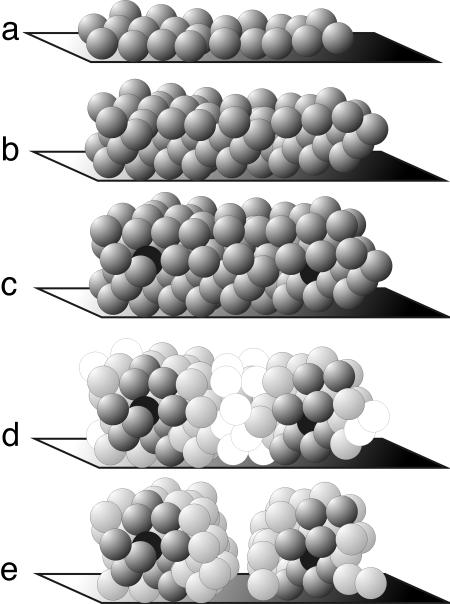Fig. 1.
Proposed model for fratricidal killing of siblings. S. pneumoniae or other bacterial species accumulate in number (a and b) and secrete low levels of a quorum-sensing molecule such as CSP. Some cells (c, cells shaded in black) are first to respond to accumulating CSP through the ComDE two-component sensing system. Responding cells in turn express high levels of the CSP quorum signal, which would appear to increase the proportion of competent cells in the immediate microenvironment, within a radius that would depend in part on the quantity of CSP expressed and its diffusion rate. Clusters of competent cells then express the CibAB bacteriocin, resulting in allolysis of siblings that had yet to achieve competence and express the protective cibC gene product (d). This lysis may result in the release of Ply and inflammatory cell-wall debris in the case of S. pneumoniae; it may result in the release of nutrients that delay the completion of sporulation by survivors in the case of B. subtilis; or in the enhancement of surface-to-volume relationships, the deposition of matrix DNA, and the outgrowth of biofilm architectures (or the release of pieces of biofilm into the circulation) in the case of P. aeruginosa or other biofilm-forming organisms.

